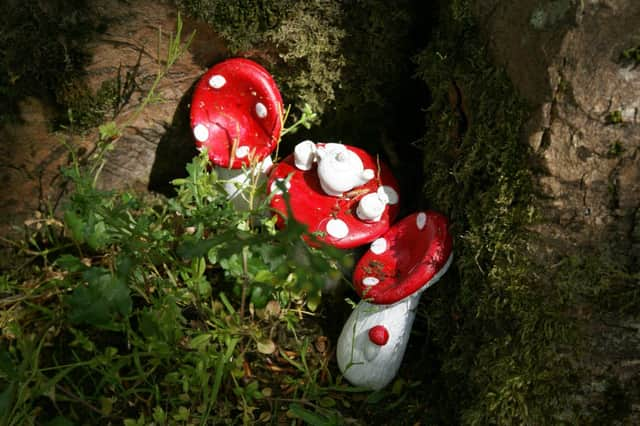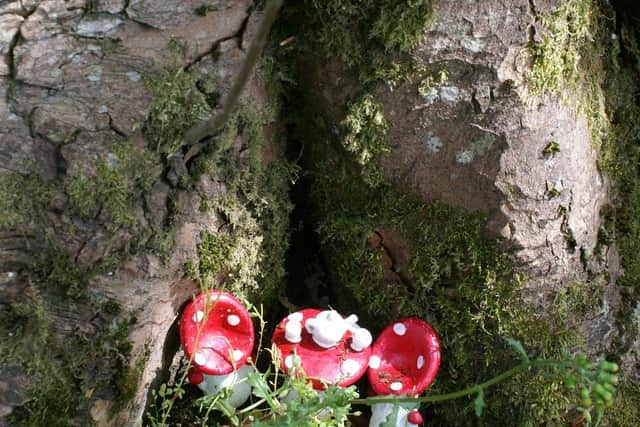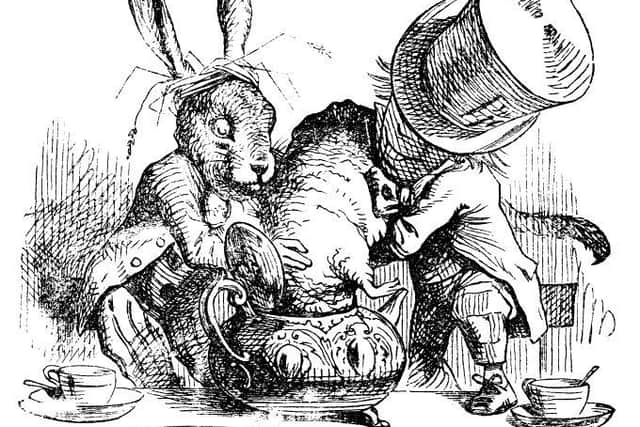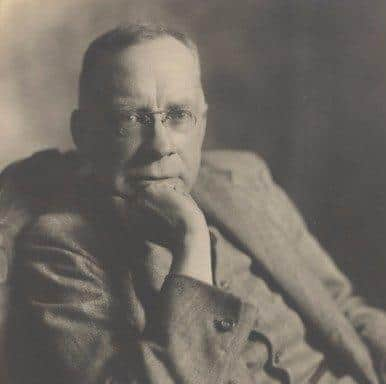Let’s try to remember moments of literary bliss during the lockdown


This week, just a few yards from my back door, I almost tripped over Alice in Wonderland’s tea party!
Fans of Lewis Carroll’s greatly loved Alice’s Adventures in Wonderland will know that the Hatter and the March Hair are first referred to in chapter six, in a conversation between Alice and the Cheshire Cat.
Advertisement
Hide AdAdvertisement
Hide AdAlice asks the cat “what sort of people live about here?” and the cat replies “in that direction lives a Hatter, and in that direction lives a March Hare. Visit either you like: they’re both mad!”


The Hatter and the Hare subsequently make their shared debut in chapter seven of the book at the Mad Tea-Party, where they dunk the Dormouse’s head in a teapot!
I’ve no idea who was throwing the party I tripped upon, but sadly I’d missed it, or perhaps I was too early; the table and chairs were there at my feet, almost hidden under moss and leaves in the gnarled roots of an old oak tree.
Nor can I guarantee that the tiny little table (a mushroom) was set with a teapot and cups and saucers for Alice and her friends as there were only two chairs (also made out of mushrooms.)
Advertisement
Hide AdAdvertisement
Hide AdBut everything was placed lovingly on the sun-mottled forest floor, with candle-holders in the ground to provide light for whatever little-people came out at night to the party. I was almost tempted to hide in the undergrowth to see who was invited.


Would it be Kenneth Grahame’s Mole and Ratty who might emerge from the Wind in the Willows around the nearby lake.
Or would it be Cookstown-born Jimmy Kennedy’s Teddy Bears - “Beneath the trees where nobody sees. They’ll hide and seek as long as they please. Cos that’s the way the Teddy Bears have their picnic.”
Or the table might be set for fairies, leprechauns, gnomes or the countless other little folk who inhabit so many wonderful childhood stories.
Advertisement
Hide AdAdvertisement
Hide AdBut unbeknownst to me during a lifetime of reading and telling stories was a local author called Forrest Reid.


A regular Roamer-contributor warned me some time ago that an attic-clearance was in progress and that a quantity of defunct newspaper and magazine cuttings would soon be wending their way into Roamer’s mailbox.
They arrived recently, and the first cutting I unfolded was a profile of Belfast-born Forrest Reid, described as “one of the greatest Ulster novelists.”
I’d never heard of him, and I’ve absolutely no idea why I haven’t come across his writings before. The cutting proceeded to describe him as “the first Ulster novelist of European stature” who was “essential to the evolving trends in the literature of the early 20 th century.”
Advertisement
Hide AdAdvertisement
Hide AdBorn in Belfast on June 24 1875 Forrest Reid was the youngest child of a large Presbyterian family in the shipping trade. On his mother’s side he could claim descent from Katherine Parr, wife of Henry VIII, a source of some wistful pride to the young Forrest. Educated at the Royal Belfast Academical Institution, he did not particularly excel, though he fared well in English, Languages and the Arts. He became an apprentice in the tea trade before progressing to study at Christ’s College, Cambridge, where he read medieval and modern languages. He graduated in 1908 and returned to Belfast to write.
He cared little for literary coteries, preferring that a small circle of friends, amongst whom he numbered E. M. Forster and Walter de la Mare, should visit him in his quiet, bachelor home in the suburbs. He was also friendly with George William Russell and C S Lewis.
Forrest Reid’s books were never commercial successes, and many have fallen out of print. Throughout his work the recurrent theme is childhood and the loss of its complicated innocence.
A powerful nostalgic yearning for youth, love, the pastoral and the certainties of the imagination fuelled Reid’s writings.
Advertisement
Hide AdAdvertisement
Hide AdAs he put it himself, the “primary impulse of the artist springs, I fancy, from discontent and his art is a kind of crying for Elysium”.
His 17 novels include The Kingdom of Twilight; Following Darkness; Uncle Stephen; The Retreat; Peter Waring and Young Tom which won the James Tait Black Memorial Prize.
He also published criticism of W. B. Yeats and Walter de la Mare, as well as ‘Illustrators of the Sixties’, a study of Victorian woodcut artists. He published articles in many magazines, including the Westminster Review and the Ulster Review, and he reviewed books for the Manchester Guardian.
Apostate, an autobiography, was published in 1926, and its sequel, Private Road, was published in 1940. He was a founder member of the Irish Academy of Letters.
Advertisement
Hide AdAdvertisement
Hide AdAfter a long and illustrious career as an author and essayist, Reid passed away in 1947 in Warrenpoint, critically well-regarded but never having achieved the widespread popular recognition he deserved.
He was buried in Dundonald cemetery, Knock, Belfast. Valancourt Books, a small independent publisher specialising in the rediscovery of rare, neglected, and out-of-print fiction, are reprinting a number of his more notable books.
A message from the Editor:
Thank you for reading this story on our website. While I have your attention, I also have an important request to make of you.
In order for us to continue to provide high quality and trusted local news on this free-to-read site, I am asking you to also please purchase a copy of our newspaper whenever you are able to do so.
Advertisement
Hide AdAdvertisement
Hide AdOur journalists are highly trained and our content is independently regulated by IPSO to some of the most rigorous standards in the world. But being your eyes and ears comes at a price. So we need your support more than ever to buy our newspapers during this crisis.
With the coronavirus lockdown having a major impact on many of our local valued advertisers - and consequently the advertising that we receive - we are more reliant than ever on you helping us to provide you with news and information by buying a copy of our newspaper when you can safely.
You can also enjoy unlimited access to the best news from across Northern Ireland and the UK by subscribing to newsletter.co.uk
With a digital subscription, you can read more than five articles, see fewer ads, enjoy faster load times, and get access to exclusive newsletters and content. Visit https://www.newsletter.co.uk/subscriptions now to sign up.
Thank you